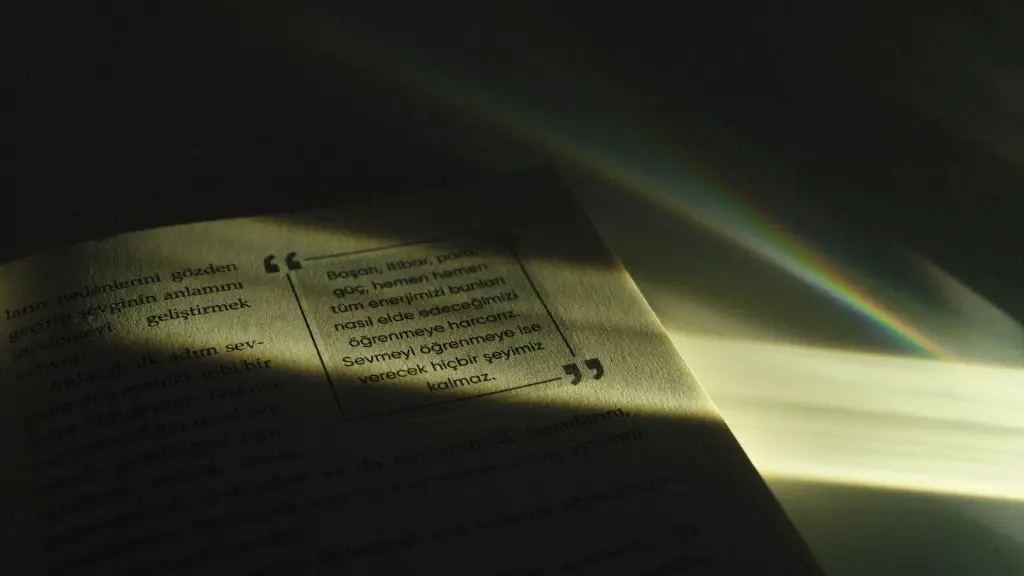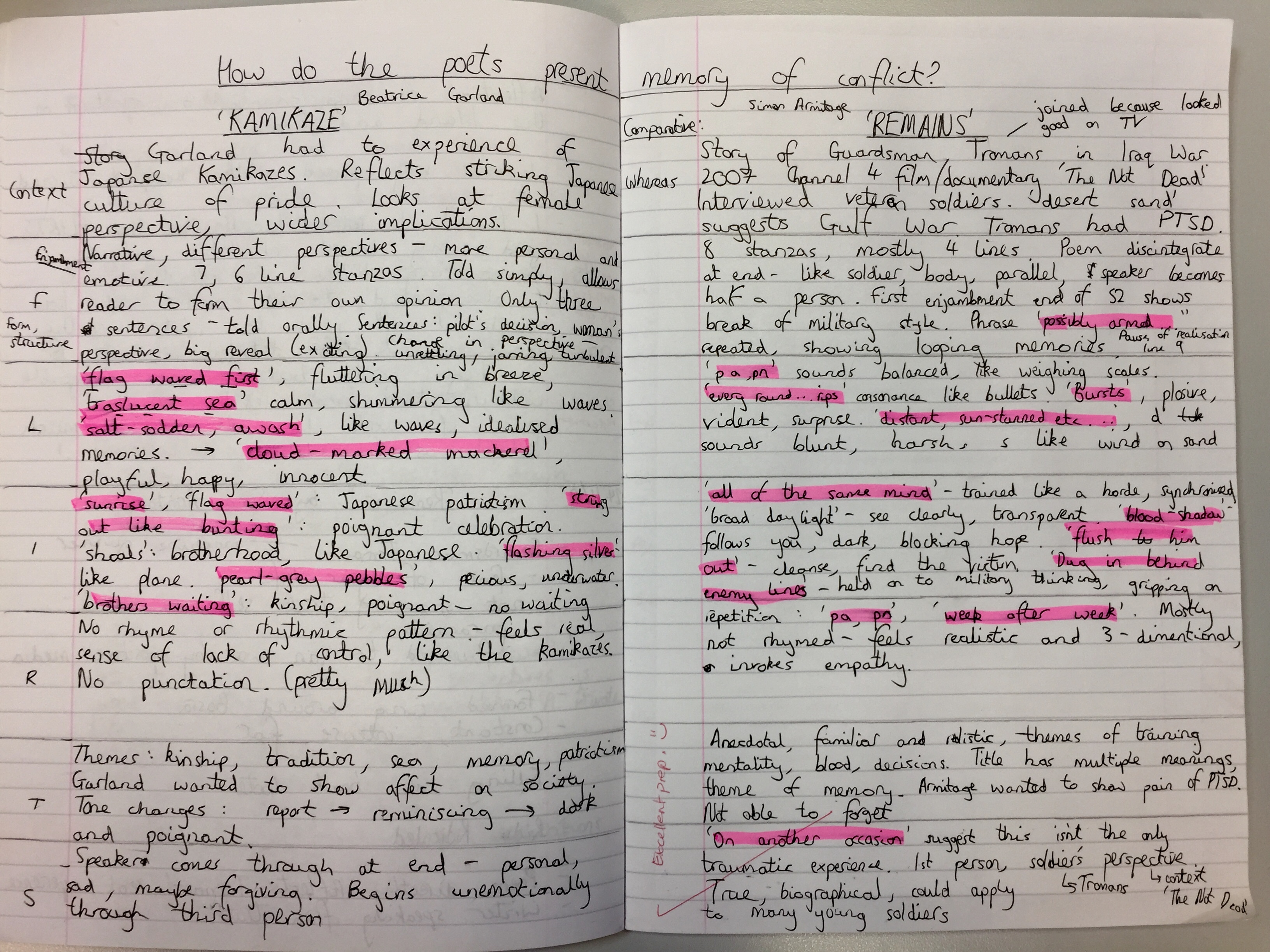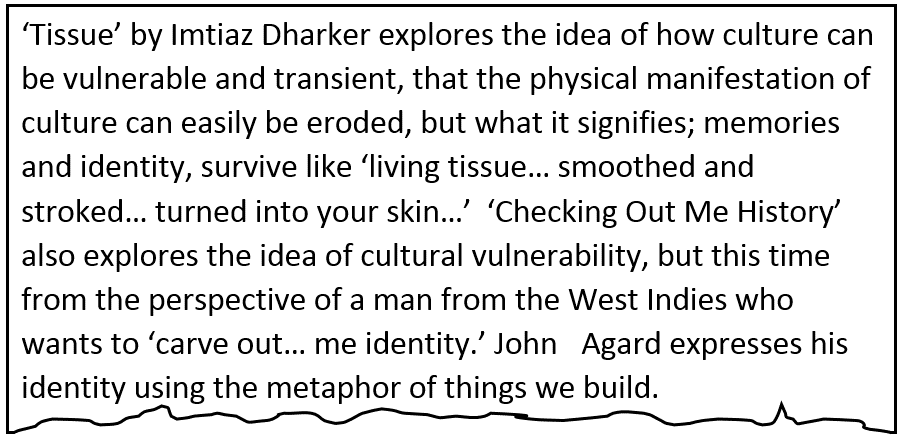Comparing Two Poems Essay Example
Poetry is a unique art form as it usually captures the feelings of a particular individual. Therefore, two poems with the same genre and similar themes can have substantial differences. On the other hand, verses that seem different can share striking resemblances. To compare and contrast two poems, this essay example will focus on the message they carry.
“The Negro Speaks of Rivers” is a poem written by Langston Hughes during the Harlem Renaissance. It was 1921, and the young Hughes was just adding his voice to the plight of the African Americans at the time. “We Wear the Mask” is a piece by the famous author and activist Laurence Dunbar. The lyrical poem was written twenty-five years before Hughes published “The Negro Speaks of Rivers.” By comparing two poems, this essay example will reveal both their similarities and differences.
These two poems were written in the period between the Civil War and the Civil Rights Movement. This period was characterized by deep emotions concerning the struggles of the African Americans. Each of these poems represents the poets’ feelings towards the struggles of the African Americans. “The Negro Speaks of Rivers” chronicles the speaker’s historical journey from Africa to the West. The speaker refers to African Americans, their history, and their heritage.
The poem captures this rich heritage albeit in a nostalgic manner. On the other hand, “We Wear the Mask” is a poem by one of the first African American writers to be accorded a national accolade for his work. Dunbar explores the coping mechanisms of the African Americans during their struggles. Both poems address issues that happen in the same period.
Dunbar’s poem was published at the turn of the century shortly after slavery was outlawed. This period was expected to be a victorious time for African Americans and everyone assumed that they were happy. “We Wear the Mask” disputes this idea and presents an argument that happiness among the African American population was a façade.
According to Dunbar, deep inside, African Americans have ‘torn and bleeding hearts’. The message in this poem is not direct and it is in line with the situation in the ground. When this poem was written, the fight for equal rights among African Americans had not started in earnest. Instead, the struggle for equal rights was just bubbling under the surface.
Dunbar’s poem hints at this discontent by claiming that African Americans were just masking their feelings. Dunbar digs deeper into the issue by claiming that most of the population at the time was hiding behind religion to avoid confronting the issues of inequality. In addition, the speaker accuses the African American population of misleading the rest of the population about their actual feelings.
Langston Hughes’ poem has a more melancholic tone. Hughes wrote “The Negro Speaks of Rivers” twenty-five years after Dunbar’s poem was written. Hughes’ poem uses a different approach to address the African American issues of the time. His poem highlights the pride of origin that African Americans have.
The speaker in this poem speaks proudly about his rich history and heritage and how it is closely connected to some mighty rivers around the world. Unlike Dunbar, Hughes does not hide the message of his poem. This is mostly because there was no need for indirect messages after the Civil Rights Movement had already taken shape. Hughes took time out of the equal rights struggles of the African Americans to reflect on this population’s prolific heritage.
By doing this, the poet was alluding to the fact that the Civil Rights Movement was a small hurdle for the population that had come so far. The message in Hughes’ poem is structurally different from that in Dunbar’s poem. Hughes is reassuring African Americans of their supremacy and the need to hold on to their mighty heritage while Dunbar is indirectly urging African Americans to do something about their veiled unhappiness.
The mask that Dunbar talks about hides a prolific history and heritage about the African Americans. On the other hand, Hughes reiterates the need for African Americans to hold on to their rich heritage. Hughes’ poem is also meant to remind the world that African Americans have contributed towards major civilizations around the world. For instance, the speaker reminds the readers that African Americans were part of the civilization that brought the pyramids.
Hughes’ point is that African Americans thrived through various civilizations around the world and the Civil Rights Movement is just another hurdle. The rest of the population at the time viewed the African American population as the recently freed slaves who were supposed to show gratitude. However, most people failed to put into consideration the fact that African Americans’ history predated slavery.
Dunbar’s poem is also structured in a manner that addresses African Americans and the rest of the population. Dunbar sends a call to action to African Americans although his message is not direct. On the other hand, Dunbar’s poem informs the rest of the population that the happiness they see among the African American population is not real. While Hughes’ message is assertive and direct, Dunbar’s message is provocative and indirect.
One of the most striking similarities between these two poems is the fact that they use a central metaphor. Hughes’ poem uses the River as the main metaphor. In addition, he includes it in the poem’s title. The river is used to show the passage of time in “The Negro Speaks of Rivers”. African Americans have come a long way and triumphed over several forms of adversity. However, just like rivers flow eternally, African Americans have kept on flowing.
The metaphor of the river is also used to show that the existence of African Americans will outlast many things. At one point in the poem, the speaker says that he has seen rivers change their appearance depending on the time. This signifies that a time will come when the outlook of African Americans will be favorable. Dunbar’s poem uses the mask as the main metaphor.
The poet also boldly introduces this metaphor in the poem’s first line. The mask refers to the façade that prevents people from seeing the discontent of the African American population. According to Dunbar, African Americans use masks to hide their actual feelings and avoid provoking those who oppress them. The mask is a strong metaphor that also lends itself to the poem’s title. Use of metaphors gives these two poems a valuable outlook and helps the poets pass their strong messages to their audience.
“The Negro Speaks of Rivers” and “We Wear the Mask” are two poems that address the plight of the African Americans albeit from different perspectives. The wishes of the two poets materialized with the success of the Civil Rights Movement. Both poets reckon that the struggle of African Americans is an ongoing process.
- Comparing Robert Frost’s Poems: The Road Not Taken and A Question
- The Comparison of the Characters of Eleonora and Tia Roma
- Paul Laurence Dunbar’s “We Wear the Mask” Poem
- “We Wear the Mask” by Paul Lawrence Dunbar
- The Work "Sea to Shining Sea" by Roxanne Dunbar-Ortiz
- About the victims in three novels
- ‘Rime of the Ancient Mariner’ and ‘Ode to the West Wind’
- Concept of Representation of Marriage
- Apartheid Imagery in "A Walk in the Night" and "A Dry White Season"
- Comparison and Contrasting: Country Lovers and Child of the Americas
- Chicago (A-D)
- Chicago (N-B)
IvyPanda. (2019, January 17). Comparing Two Poems. https://ivypanda.com/essays/comparison-of-two-poems/
"Comparing Two Poems." IvyPanda , 17 Jan. 2019, ivypanda.com/essays/comparison-of-two-poems/.
IvyPanda . (2019) 'Comparing Two Poems'. 17 January.
IvyPanda . 2019. "Comparing Two Poems." January 17, 2019. https://ivypanda.com/essays/comparison-of-two-poems/.
1. IvyPanda . "Comparing Two Poems." January 17, 2019. https://ivypanda.com/essays/comparison-of-two-poems/.
Bibliography
IvyPanda . "Comparing Two Poems." January 17, 2019. https://ivypanda.com/essays/comparison-of-two-poems/.
- To find inspiration for your paper and overcome writer’s block
- As a source of information (ensure proper referencing)
- As a template for you assignment
IvyPanda uses cookies and similar technologies to enhance your experience, enabling functionalities such as:
- Basic site functions
- Ensuring secure, safe transactions
- Secure account login
- Remembering account, browser, and regional preferences
- Remembering privacy and security settings
- Analyzing site traffic and usage
- Personalized search, content, and recommendations
- Displaying relevant, targeted ads on and off IvyPanda
Please refer to IvyPanda's Cookies Policy and Privacy Policy for detailed information.
Certain technologies we use are essential for critical functions such as security and site integrity, account authentication, security and privacy preferences, internal site usage and maintenance data, and ensuring the site operates correctly for browsing and transactions.
Cookies and similar technologies are used to enhance your experience by:
- Remembering general and regional preferences
- Personalizing content, search, recommendations, and offers
Some functions, such as personalized recommendations, account preferences, or localization, may not work correctly without these technologies. For more details, please refer to IvyPanda's Cookies Policy .
To enable personalized advertising (such as interest-based ads), we may share your data with our marketing and advertising partners using cookies and other technologies. These partners may have their own information collected about you. Turning off the personalized advertising setting won't stop you from seeing IvyPanda ads, but it may make the ads you see less relevant or more repetitive.
Personalized advertising may be considered a "sale" or "sharing" of the information under California and other state privacy laws, and you may have the right to opt out. Turning off personalized advertising allows you to exercise your right to opt out. Learn more in IvyPanda's Cookies Policy and Privacy Policy .

How to Write an Essay Comparing Poems
This is Revision World’s guide on how to write an essay or answer an exam question that asks you to compare poems within the poetry anthology you are studying.
Understanding the Task:
Identify the Key Components: Ensure you understand the task requirements, including the poems you're comparing, the themes, and the aspects you need to analyse (e.g., structure, language, tone).
Pre-Writing Stage:
Read and Annotate: Read the poems multiple times, annotating key themes, literary devices, and interesting observations.
Identify Similarities and Differences: Note down similarities and differences in themes, imagery, language, structure, and tone between the two poems.
Structuring Your Essay:
Introduction:
Introduce the poems and poets, providing context if necessary.
Present your thesis statement, outlining the main points of comparison.
Body Paragraphs:
Topic Sentences: Start each paragraph with a clear topic sentence that states the aspect of comparison.
Comparison: Analyse each poem separately, focusing on the chosen aspect (e.g., theme, structure). Then, compare and contrast the same aspect in both poems.
Use of Evidence: Provide evidence from the poems to support your analysis (quotations).
Analysis: Interpret the significance of the similarities and differences, considering their effects on the reader and the overall meaning of the poems.
Conclusion:
Summarise your main points of comparison.
Reflect on the significance of the comparisons and their implications for the reader.
Offer insights into the broader themes or messages conveyed by the poems.
Writing Tips:
Be Specific: Avoid vague statements and ensure your comparisons are specific and well-supported by evidence.
Consider Poetic Devices: Analyse the poets' use of poetic devices (e.g., imagery, symbolism, metaphor) and how they contribute to the overall effect of the poems.
Focus on Key Themes: Choose a few key themes or aspects to compare rather than attempting to cover everything in the poems.
Maintain Coherence: Ensure your essay flows logically, with clear transitions between paragraphs and ideas.
Proofread: Carefully proofread your essay for grammar, spelling, and punctuation errors.
Example Statement:
"In 'Poem A' and 'Poem B,' both poets utilise imagery and symbolism to explore the theme of loss, but while 'Poem A' uses natural imagery to convey a sense of grief and acceptance, 'Poem B' employs religious symbolism to depict a more existential struggle with loss and faith."
Example Topic Sentences:
"In 'Poem A,' the poet employs vivid natural imagery to convey the speaker's emotional response to loss."
"Conversely, 'Poem B' utilises religious symbolism to explore the theme of loss in a more abstract and existential manner."
By following these steps and incorporating these tips, you can effectively write a well-structured and insightful essay comparing two poems in your GCSE English Literature exam.

Poetry & Poets
Explore the beauty of poetry – discover the poet within
A Level Poetry Comparison Essay Example

Introduction
Writing a comparison essay between two poems can be an interesting task. It requires a student to be creative and think outside of the box. Although poetry comparison might seem overwhelming and daunting, once you understand the basics of comparing two poems, the task suddenly becomes much easier. This article aims to provide students with a comprehensive guide on how to write a poetry comparison essay, offering key tips and providing example essays for inspiration.
What is a Poetry Comparison Essay?
A poetry comparison essay is a type of essay in which the student is asked to compare two different poems of their own choosing, analyzing and critiquing each one. The poems should share some common theme or concept, yet still have many differences that the student should explore and compare. Generally, the student should draw upon their own knowledge and research to make comparisons between both poems.
Key Considerations
When writing a poem comparison essay, there are several key things to consider. Firstly, the student should think about the overarching theme or concept of the both poems, as this will most likely be an aspect they will need to focus on when comparing. Furthermore, the student should think about the structure of the poems, taking into account the layout, the rhyming patterns, and other literary elements such as alliteration and repetition. Additionally, use of language, imagery and symbolism should also be taken into account.
Comparing Language in Poems

When comparing two poems, one of the key aspects that the student should consider is the language used within each one. Generally, they should try to notice any patterns of language and note these down, thinking about how the various elements of language such as metaphors, similes and personification add to the effect of the poem. Additionally, the use of dialogue, structure and sounds can be used to compare the two poems, and how these elements help to convey the theme or emotions.
Analyzing Imagery and Symbolism in Poems
When comparing two poems, students should also be looking closely at the imagery and symbolism that is used within the poems. Imagery refers to any kind of mental image, description or figure of speech that has a referential meaning—namely, it refers to something else in order to help convey the subject. For example, a poem might use imagery of a flower to symbolize growth, or the use of tools to symbolize hard work. Symbolism, on the other hand, is an object or image that stands for something that it doesn’t literally symbolize. It can be used to add an extra layer of meaning to a poem.
Key Comparisons in the Poems
When comparing two poems, it is important to look at their similarities and differences. Generally, the student should look at common themes and imagery, as well as similarities in style and structure. It is also important to note how each poet has used language, imagery and symbols differently to convey their messages and feelings. Additionally, the student should think about how the structure of verbal and nonverbal elements impacts the overall message of the poem.
Example of a Poetry Comparison Essay
When writing a poetry comparison essay, an example can be useful. Taking a look at the following example from a student’s A-Level English Literature essay: In this essay, I shall be comparing and contrasting two poems: “The Road Not Taken” by Robert Frost and “The Listeners” by Walter de la Mare. Firstly, I shall be exploring the theme of choices in both poems. In “The Road Not Taken”, Frost has created a poem about the power of decision making, whereas “The Listeners” offers a less optimistic view on the consequences of choices. Both poems use vivid imagery to convey their respective messages. For example, “The Road Not Taken” uses the image of two roads to symbolize the difficult choices we make in life, while “The Listeners” uses the image of an empty house to represent the loneliness and confusion of not knowing which direction to take. The use of structure is also important in these two poems. Frost has used rhyming couplets to explore the theme of choices, while de la Mare adopts a more open, free-verse style. Both poets also use a similar range of language throughout their poems, with words such as “forlorn” and “darkness” being used to create a sense of loneliness and uncertainty. Ultimately, both poems explore similar themes in inventive, yet different ways.
Applying the Analysis

When writing a comparison essay between two poems, it is important to consider the key aspects discussed in the article, such as the theme, language, imagery and symbolism of each poem, as well as the structural elements. It is also important to apply the analysis to the essay, noting any relevant similarities or differences as you go. Additionally, the student should support their analysis with relevant evidence, such as quotes and examples, to ensure that the essay flows smoothly and that all aspects are covered.
Writing Style
When writing a comparison essay, it is important to ensure that the writing style is formal and direct. Generally, the student should not use overly complex sentences to ensure that the reader can understand the points that they are trying to make. Additionally, it is important to avoid the passive voice and use the active voice instead. This can help to ensure that the essay is succinct and that all points are clear and concise.
Explore Poems
When writing a poetry comparison essay, it is important for the student to take time to explore the chosen poems. Generally, the student should spend time looking at the different aspects of each poem in order to gain an understanding of the theme and ideas that the poet has tried to convey. Additionally, they can also look at reviews and interpretations of the poems in order to gain further insight into the meaning of both texts.
Bring in Outside Sources
When writing a comparative essay, it can be a good idea to bring in outside sources in order to provide a wider perspective on the chosen poems. Generally, this will involve looking for scholarly articles or reviews that have been written about the particular poems, and using these to provide further insight into the meaning and theme of the text. Additionally, the student should also look for any critical analysis that has been written in order to gain interesting perspectives from other experts in the field.
Organize Your Essay

When organizing the essay, the student should ensure that the essay is well structured and organized. Generally, a good structure for the essay should include an introduction, body paragraphs and a conclusion. Additionally, the body of the essay should be divided up into two sections, one analyzing each poem individually, and one section comparing both poems. This can help to ensure that all relevant points are covered, and that the essay flows smoothly.

Proofreading and Editing
Finally, before submitting the essay, it is important to ensure that the student proofreads and edits the essay thoroughly. Generally, editing should involve re-reading the essay to check for any inconsistencies in the argument, as well as any spelling or grammar errors that may have been overlooked. Additionally, the student should also use a spellchecker and a grammar checker to ensure that the essay is perfect.
In conclusion, writing a poem comparison essay can be an interesting and challenging task for students. By understanding the key considerations discussed in this article and taking note of the example essay, students should be well on their way to writing a successful comparison essay. It is also important to take time to explore the chosen poems, bringing in outside sources to provide a wider perspective. Additionally, the student should ensure that the essay is well organized, and that they proofread and edit it thoroughly before submitting.

Minnie Walters
Minnie Walters is a passionate writer and lover of poetry. She has a deep knowledge and appreciation for the work of famous poets such as William Wordsworth, Emily Dickinson, Robert Frost, and many more. She hopes you will also fall in love with poetry!
Leave a Comment Cancel reply

Anthony Cockerill
Teaching English. Writing. The written word.
Teach your students how to compare poems for GCSE English Literature, Paper 2, Section B
Learn some of these brilliant strategies for teaching really effective poetry comparison for GCSE English Literature, Paper 2, Section B.
One of the elements of our students’ exam performance we identified as a weakness in last summer’s examination series was comparing poems from the AQA poetry anthology, Poems Past and Present, which forms part of GCSE English Literature Paper Two. In the English Department at Boroughbridge High School, where we teach the Power and Conflict cluster, we’ve been spending time over these past few weeks taking a closer look at what our students need to do in order to write a great poetry comparison. Using our current students’ work alongside papers we recalled from last summer – plus the ever helpful examiner’s report – we’re working to establish some maxims for how we teach this particular aspect of the examination, which I’d like to share with you in this blog post.
1. Get your students to know the poems really well.
‘Students who knew the text were able to move around and within it in order to respond to the specifics of the task.’ AQA Examiners’ report, June 2017.
There are some great ways to introduce students to poems, such as D irected A ctivities R elated to T exts, in which a student is usually instructed to reconstruct or resequence a text. An activity might encourage students to think about the form of the text, the structure, or the recurrence of particular types of language.

As a first encounter with Seamus Heaney’s ‘Storm on the Island’, students might consider what the poem could be about by exploring the nouns. Are there any patterns? Could they be classified into lexical fields? Or they might attempt to write a poem or description using words sorted by their function. Alternatively, a teacher might encourage students to engage intellectually or emotionally with the poem by exploring a still image, a moving image clip or by sharing a story.
The subsequent process of the shared reading of the poem in its entirety and the ensuing discussion is a great opportunity to model the process of reading, understanding and thinking analytically. A series of prompts – or something akin to ‘Key Questions’ – can work as a framework for class discussion, enabling students to think, and ultimately write, about the poems and also to provide a ‘schema’ to help them build and consolidate their knowledge and understanding.

When helping students to deal with aspects of language and structure, a teacher might provide a tool to help students structure their thinking and note-making (the acronym FLIRTS, for example, which stands for F orm and Structure, L anguage and Sounds, I magery, R hyme, Rhythm and Repetition, T heme and Tone, S peaker).

2. Cluster and study the poems thematically to help students to make a good choice of second poem.
‘The selection of the second poem is one of the keys to success as this gives the student the material to construct a holistic response.’ AQA Examiners’ report, June 2017.
The Power and Conflict cluster could be usefully divided into poems about power and legacy; poems about the power of natural world and conflict with humans; poems about conflict that can happen as a result of culture and belonging; poems about war and conflict. Thinking about the poems in these clusters will guide students toward making a helpful choice of second poem.
3. Don’t constrict written responses with a rigid framework, but instead provide more flexible ways of comparing the poems.
‘One examiner commented that one of their key teaching points for next year will be that “comparison comes in a variety of shapes and does not have to be formulaic”‘. AQA Examiners’ report, June 2017.
Some of the possible ways of structuring a poetry comparison can lead to answers which can constrain the level of the response. This can usually be evident when ‘essay plans’ are too simplistic (Poem A, then Poem B) or too artificial (Similarities and Differences) but also when they become too unwieldy. But the examiners’ report suggests that ‘…the key message here is to enable and guide students to form a comparison relative to their level of ability.’ In engaging with the poems, a student aiming for a top grade should aim for a conceptualised response which is exploratory in nature. A confident student might write an ambitious introduction which outlines their ‘angle’ on the question. They might seek an interesting angle on the task, such as how patriotism might lead soldiers into combat. Then they might develop their response along a series of conceptual lines of enquiry, integrating analysis of the writers’ methods as they go; illuminating their interpretation with contextual insight relevant to the task.

Rather than offering up a rigid ‘essay plan’, the ‘series of prompts’ I described above as a cognitive tool can function, when applied to both poems, as a sort of ‘loose structure’ to help students produce a more focused written response. I have found these ‘Key Questions’ to be useful in encouraging students to focus on a comparison of two poems. ‘What are the poems about?’ serves as an introduction to the whole response.

‘Who is ‘speaking’ in the poems?’, as I discuss in more detail below, allows the student to engage with the ‘constructed voice’ of the poem. ‘How has the poet used language and structure to convey their message?’ allows students to consider the writers’ methods. ‘Why have the poems been written?’ offers the opportunity to explore deeper layers of meaning, authorial intent and conceptual interpretations. However, it’s important to think of this approach as flexibly as possible. It wouldn’t be good, for example, to encourage students to think of the Key Question ‘why have the poems been written?’ as an opportunity to shoehorn context into their response. Ideas, exploration of the writers’ methods and apt integration of context should be evident throughout the response.
4. Think about the voice as a construct.
‘Students who recognised where the voice was a construct were more successful than those who regurgitated biographical information about the poet that they then attempted to link to the poetic voice.’ AQA Examiners’ report, June 2017.
Addressing the task itself – and considering why the poems might have been written – will enable the student to naturally explore context – rather than including lots of biographical information. But the ‘persona’ of the constructed voice might also provide a very useful way of considering context. In Simon Armitage’s ‘Remains’, for example, the narrative voice deftly reflects the turmoil of someone struggling to come to terms with what they’ve seen. Armitage’s narrator uses first-person plural pronouns, for example, to emphasise the narrator’s attempt to redistribute his own guilt among his comrades. Similarly in ‘Beatrice Garland’s ‘Kamikaze’, the modulating narrative perspective creates distance between the reader and the narrator that reflect the gulf between pilot and family. Context in this analysis, therefore, becomes implicitly connected to the student’s understanding of the task.
5. Make sure students understand the importance of answering the question.
When students start to write their responses – and if they’re using my ‘Key Questions’ approach, they’ll begin by considering what the poems are about – they must respond in terms of the question rather than with something generic. ‘Ozymandias’ by Percy Bysshe Shelley for example, explores the power of the natural world, but if the question is about the theme of mortality, then it is through this filter that the student must construct their response. It’s useful reiterate the key word from the question throughout throughout the answer to keep the response on track.
6. Get students to engage with the poem, rather than obsessing about poetry terminology.
‘Some responses set out to identify poetic techniques and employ as much terminology as possible before engaging with the poems themselves.’ AQA Examiners’ report, June 2017.
Sometimes, a student who is too heavy handed with various poetry terms can find themselves attributing questionable effects to the features they’ve ‘spotted’. It’s much better to encourage students to consider different layers of meaning in language and to consider possible interpretations.

7. Flexible analytical writing is much more effective than the PEE paragraph.
‘The use of structures such as PEE / PEA and its variants worked in the sense that they allowed students working at the lower levels to access Level 3 in the mark scheme. However less rigid structures worked better for those working at higher levels.’ AQA Examiners’ report, June 2017.
As I have explained in an earlier blog post , I’m not sure I always taught analytical writing well earlier in my teaching career. For me, like many, the PEE paragraph was a formula to get students through coursework essays and to use as a model for exam-style responses.

8. Teach students to integrate and embed short quotations – it’s much more effective than copying out longer quotations.

It’s much more productive when students embed judiciously chosen, short quotations into the essay, rather than wasting time copying out large chunks of text. The response will feel much more fluid.
9. Encourage students to write individual responses with precise, cogent expression and more sophisticated analytical writing techniques.
When aiming for top flight responses, there are several techniques students can deploy as part of a well-structured, insightful essay. These include evaluation, anticipating the response of the reader, tentativity, spotting patterns and deepening analysis are some great ways of making analytical writing more ambitious.

Here, the student has spotted patterns of language throughout the poem.
The student here has noted the ambiguity of the poem in this example of deepening analysis…
10. Familiarise students with how their work will be marked.
‘Mark schemes’ should be used with care, as the process of arriving at a level is a subjective judgement based around a guided standardisation process. Futhermore, the meta-language around each level needs to be properly exemplified and understood – something even experienced teachers and examiners need ongoing support with. This said, it is always a worthwhile exercise to share with students an exemplar script or two and a ‘friendly’ version of the mark scheme they can use to become familiar with the standard and where their own writing sits.
Photo by Artur Matosyan on Unsplash
- Click to share on Twitter (Opens in new window)
- Click to share on Facebook (Opens in new window)
- Click to share on Pinterest (Opens in new window)
- Click to email a link to a friend (Opens in new window)

- Already have a WordPress.com account? Log in now.
- Subscribe Subscribed
- Copy shortlink
- Report this content
- View post in Reader
- Manage subscriptions
- Collapse this bar

IMAGES
VIDEO
COMMENTS
By comparing two poems, this essay example will reveal both their similarities and differences. These two poems were written in the period between the Civil War and the Civil Rights Movement. This period was characterized by deep emotions concerning the struggles of the African Americans.
To write a successful paper, one needs to apply higher-level thinking to structure information gathered from researching the poems. This article provides useful tips on how to compare two poems and structure a successful poetry comparison essay.
Compare four poems, two of which are from your anthology and two from the list to explore the meaning of war as portrayed by each poet. Compare the ways two poets present attitudes towards culture. Explore attitudes to conflict in the poem 'Futility' by Wilfred Owen with one other of your choice.
Need poems to compare and contrast? Check out these ideas for examples to get yourself started, and see how to crush your essay assignment.
How do you tackle a poetry exam question that asks you to compare one poem with another? Learn about effective ways to explore similarities and differences to enable a better comparative...
Below you will find a full-mark, Level 6 model answer for a poetry anthology comparison essay. The commentary below each section of the essay illustrates how and why it would be awarded Level 6.
Comparative essays involve evaluating the similarities and differences between two or more things. In this case, you will be comparing poems. The important elements to consider when writing a comparative poetry essay are form, structure, language, and meter.
Present your thesis statement, outlining the main points of comparison. Body Paragraphs: Topic Sentences: Start each paragraph with a clear topic sentence that states the aspect of comparison. Comparison: Analyse each poem separately, focusing on the chosen aspect (e.g., theme, structure).
When writing a poetry comparison essay, an example can be useful. Taking a look at the following example from a student’s A-Level English Literature essay: In this essay, I shall be comparing and contrasting two poems: “The Road Not Taken” by Robert Frost and “The Listeners” by Walter de la Mare.
Learn some of these brilliant strategies for teaching really effective poetry comparison for GCSE English Literature, Paper 2, Section B. One of the elements of our students’ exam performance we identified as a weakness in last summer’s examination series was comparing poems from the AQA poetry anthology, Poems Past and Present, which forms ...